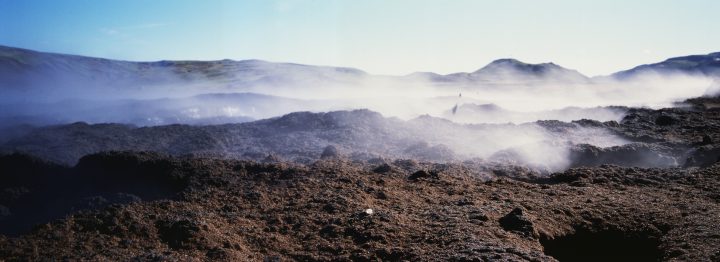An action initiated by Cecilia Parsberg, Sweden and Madoda Floyd ‘Fly’ Msibi, South Africa. Start: year of 2000 with a video-tale, 35 photos in 2001, and an interactive web site 2002- 2003. Platform: Stockholm-Soweto-Reykjavik
 People involved:
People involved:
Idea and process: Cecilia Parsberg and Madoda Fly Msibi
Video editor: Cecilia Parsberg and Menno Boerema
Photos: Cecilia Parsberg
Camera: Madoda Fly Msibi, Cecilia Parsberg and Katja Aglert.
Web site: Web designer:Mats Renvall, The screen saver: Thomas Broomé
Travel organisation for Island: Ana L Valdés
Description: The art project vo-ice includes three parts. It follows a purchased diamond, called ice, in South Africa. Cecilia lived in Soweto a month, she and Madoda searched for a diamond, they found one. Cecilia took the diamond with her to Sweden and six months later Fly came and lived in Stockholm for a month. They went with the diamond to Iceland, dropped it in the water there and the ice turned into voices. On www.this.is/Parsberg/ice the third part of the site, was possible for people to tell their stories. If you downloaded a screen saver the stories would automatically be displayed as soon as they were written ”cyberspace does not exist as a space; it can, however, exist as soon as one acts. This is communication”



Cecilia Parsberg is the initiator of several projects working in the realms of art and activism, post colonial theory, globalisation and representation, using the Internet as a forum for publication, information and a way of connecting to people.
Madoda Floyd Msibi is selling artefacts in Soweto. He is developing ways of living and acting in Soweto and through this discussing the future of this society. He is interested in art and activism, post colonial theory, globalisation and representation.
Fly: – ‘Cecilia, Do you believe the trees are breathing?’
Cecilia: – ‘Yes.’
Fly: – ‘Then, there’s no place that’s a non-place. Because you can chase someone in the bush and you think someone is not watching you but the very trees and grass are watching you and the soil as well, because they’re breathing. So, there’s no place in reality that’s a non-place. If you believe in a material world there is a non-place but if you believe in the spiritual world there is no place that’s a non-place.
vo-ice became a growing network of people. When diamonds have crossed borders it has not been agreed with everyone involved, there are no bridges over these gaps. The action ICE was a bridge for a time.
Some participate in vo-ice by buying a photo of the diamond. There are 35 of them, all different, ice on ice or ice in fire. `When someone buys a piece of art they buy something to believe in, they look at it every day and there’s a real commitment on the purchaser’s part. With this work they can follow the whole process, they get the video-tale with the photo and the continuation with voices – stories by people, on the web site.
Hakhim Bey: – `No one willingly risks life in the NGZ* for mere ideology – but the utility of certain utopian models can be tested´. *No Go Zones
Marc Augé: – `In non-places the individual enters into a kind of pure relation with the forces of capital, unhindered by an attachment to community or identity. The non-place is designed to accommodate all people, regardless of age, place of birth, ethnicity, etc. It is a space void of particularity.´
Ana L Valdes: – `Non-places are the crack between memory and speech, the gap to our consciousness, the lost link to our past. Non-places are immersed in the geography of the possible.
Hakim Bey: – `If we study this embryonic or ontogenic map, we can see clearly that the ”South” has already been cut out of the pattern, by an act of cartomanic imperialism that denies meaning to the same areas which have been denied ”access” to the Commlinks. The South will reenter the paradise of information – for information is glacial crystalline ice, while the South is the realm of fire and noise.´
Cecilia Parsberg: ‘I am not satisfied with the fact that I can only communicate with a limited number of artists in the world – that my exchange and interaction with others, both as a human being and as an artist, is regulated by economical reasons. The limitation in the economy for everyone becomes our limitation of knowledge because we don’t have access to what others might give or say.
Luce Irigaray: – `Dialogue between two resists totalitarianism´